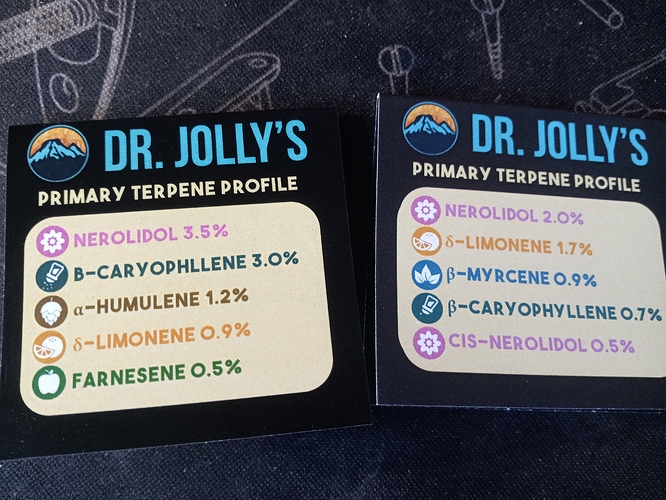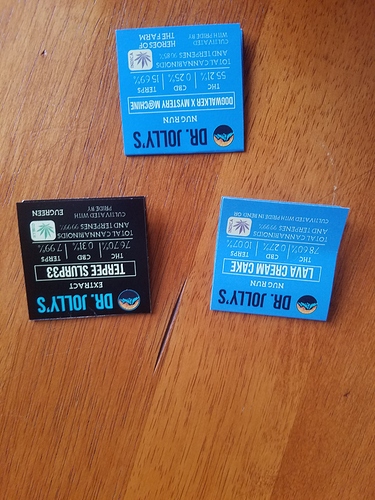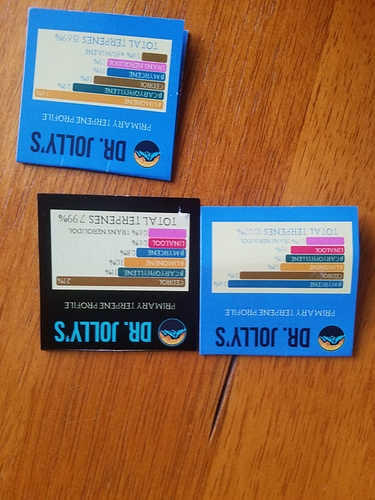I got it right though? That rivet pattern on the front trunnion is the unique give away.
just a generic AK tekmat
M1 garand. I remember that from Medal of Honor Rising Sun for the PS2. Damn that just fired up some circuits in my brain that haven’t been active in a long long while.
cedrol was amongst the standards Fischedick used in the above study…but levels were not reported.
which might mean it’s hard to resolve…
As mentioned by Hazekamp, certain terpenoids in cannabis, mainly certain sesquiterpenoids, are difficult to identify due to poor resolution and lack of reference materials.30 For the purposes of classification, we chose to build a database containing only unequivocally identified terpenoids for which we had an authentic reference standard whose peak identification was confirmed by GC-MS
especially from a “mixed” standard
Two terpenoid mixes, Can-Terp Mix1 and Can-Terp Mix2, were purchased from SPEX CertiPrep (Metuchen, NJ) and contained camphor, β-myrcene, farnesene (mixture of isomers), p-mentha-1,5-diene, eucalyptol, isoborneol, linalool, β-caryophyllene, ocimene (mixture of isomers), caryophyllene oxide, fenchone, hexahydrothymol, α-bisabolol, camphene, 3-carene, cedrol, geranyl-acetate, isopulegol, nerol, cis -nerolidol, valencene, β-pinene, limonene, α-pinene, fenchone, borneol, geraniol, pulegone, α-humulene, α-cedrene, terpinolene, γ-terpinene, α-terpinene, guaiol, sabinene, camphor, endo-fenchyl-alcohol, trans -nerolidol, sabinene hydrate, and terpineol (mixture of isomers) in methanol.
so that’s two companies supplying to the cannabis testing industry that think it might be in cannabis, and at least ChemHistory who thinks it’s they see it.
curious…
So you think it comes down to a reference sample issue? It’s weird that they’d just run with it, given the almost complete lack of literature you’d think they’d be pushing white papers out about it
Yeah that’s a really weird list. There’s a few of those that I’ve never seen identified in any cannabis study or lab but then they’re neglecting ones that I’ve seen referenced in other well known studies.
Things like this are probably part of the reason we have no fucking clue why weed smells the way it does. For all we know we may have been looking at some of the wrong terpenes altogether.
That was a pretty good guess, hard to tell from what’s covered.
Could be a mis-identification of another compound.
When taking a closer look with GC-MS i have definitely seen cedrol before, but never in a significant amount.
We haven’t seen any in the terpenes we’ve analyzed. I’d have to agree with @stoopkid, at those levels it seems like something fake has been added.
I saw these too and had to purchase some of these dr.jolly’s with high cedrol to try myself. Ive dabbed em both low and high temp and have been enjoying them, the thought never crossed my mind that it could be non-native flavoring being added based on the flavor im experiencing.
If they are adding something non-native to the extract then they have found the best non-canna flavoring ive ever tried and if such were non-native then it would put TrueTerps outa biz with their pinesol and urnal cake flavors.
I agree.
Both cedrene and cedrol (which have similar scents) show as occasional
terpene components in numerous strains in my database, but at a very low
level, say 0.1% of the total terpene volume (i.e. ppm’s in biomass)
Levels being discussed here are most certainly artificial, unless it’s a newly
bred strain, unheard of elsewhere. I’d also say with gc/mc it’s very unlikely
to misidentify either one due to the distinctive/rare bicyclic 5/7 ring structure.
I picked up three new ones(only 2 pictured), and no cedrol among any of them. Also tested by ChemHistory
Amen.
Aren’t they not allowed to add any non cannabis terpenes though? That’s good they taste good, but if they’re saying it’s 100% cannabis derived then that’s some tomfoolery
pretty sure they aint supposed to add non canna terps. Ive had an avitas lemon merang a few yrs ago that def had non canna terps added, it was very obvious taste. I’ll do some investigation, ya got me curious now. I have liked this DJ’s for yrs, watched em grow thru the rec shift here in OR and will have to stop supporting if theres some bullshit goin down. *If there is tomfoolery afoot, I will have to applaud them cause ill humbly say “ya got me” (i got a pretty sensitive and refined pallet)
Soo, upon further investigation I think we have an interesting terp mystery here. Im in contact with Dr.Jolly’s and they are intrigued and digging deeper into this as I type. They have been very transparent with me so far. They assured me they wouldnt add non-canna terps and could loose license if they did and mislabeled. I trust them on this, I dab this oil and dont taste anything that makes me wonder about a non canna flavor adulterant.
There are flower tests that do show some Cedrol present ,but its not the dominant terp in the flower profile. interesting is how the oil can come out with cedrol as a dominant terp. This is either a lab/calibration issue or there is more cedrol (or what tests as cedrol) being created in the mixture at some point in the extraction/post processes. Very interesting here and whatever comes of it Im pretty sure were gonna learn something. I actually just went and bought some more of these high cedrol grams cause I enjoy the flavor so much.
Yeah I’m going to stick with my original theory— they’re adding fake terps. If it were the lab you would be seeing it in other extracts in your area. If it were a random conversion from a commercial extraction process then we all would be seeing this terpene pop up.
Even if it were the latter, they’re the only processor ending up with this terpene in their extracts in substantial amounts. That would raise more questions than answers. If they are the only ones mysteriously creating this terpene then what are they doing differently and more importantly what other accidental side reactions are taking place? It’s not some rare strain that they have. Its either semi-synthetic or being added from some other essential oil.
I bet you you will start seeing less Cedrol in their new batches now that you brought it up.
Hey everyone, thanks for reaching out about this. First and foremost, we have not, do not and will not add anything to our cannabis extracts, nor have we ever. The flower above was grown in house using organic no till methods and KNF, there are also batches there grown by Eugreen and Hero’s of the Farm. I looked into the flower test results and there is ZERO cedrol in them. However, after doing a bit of research I have found test results out there showing significant quantities of cedrol in flower (not ours, link to follow). I think that the most likely explanation is either A. a misinterpretation of the results by ChemHistory or B. something to do with their reference standard. I have an email in to chem history to help shed light on this and I welcome the input of the community to help figure out this mystery. I have literally thousands of extract tests and I found some going back for as long as they have been quantifying cedrol and I have yet to find a single test result of the same flower showing even a trace amount. What exactly is going on here? Another theory; is it possible that this terpene could be a postcurser, like THCA to THC to CBN? Could it be created under high pressures somehow? Could it be created during the crash out phase somehow as the extracts “age” post extraction prior to testing? I welcome any ideas on this…
Appreciate the candor. thank you!
I’ll buy that for a dollar. especially if you post a COA listing HOW Chemistry is ID’ing their terpenes. the fact that it’s in the commercially terpene standard mix means probably means they’re ID’ing it correctly…especially if they only see it in your extracts.
might be easier to interpret that if you were willing to disclose the process. flower COA’s to compare to to figure out which terpene is missing in the extracts might also be informative.
Your reply is appreciated. Is the flower and extract both being tested by the same lab? That’d be the first obvious question.
I just find it hard to believe that if it is indeed converting from something else in the plant that you would be the only place accidentally doing it. Terpenes turn into different terpenes all the time, but it doesn’t make sense that only you are getting this one. At the very least you’d assume some other processor in your area would be getting significant amounts of it.
It could be something like your limonene is degrading to para-Cymene (happens in nature all the time) and the lab could be mistaking para-cymene for Cedrol. This is just a random example but there are tons of examples like this in the plant that have been observed elsewhere in nature. I just think that if this were the case you wouldn’t be the only one seeing it pop up. Unless you guys are using some crazy acids/process that no one else is doing


